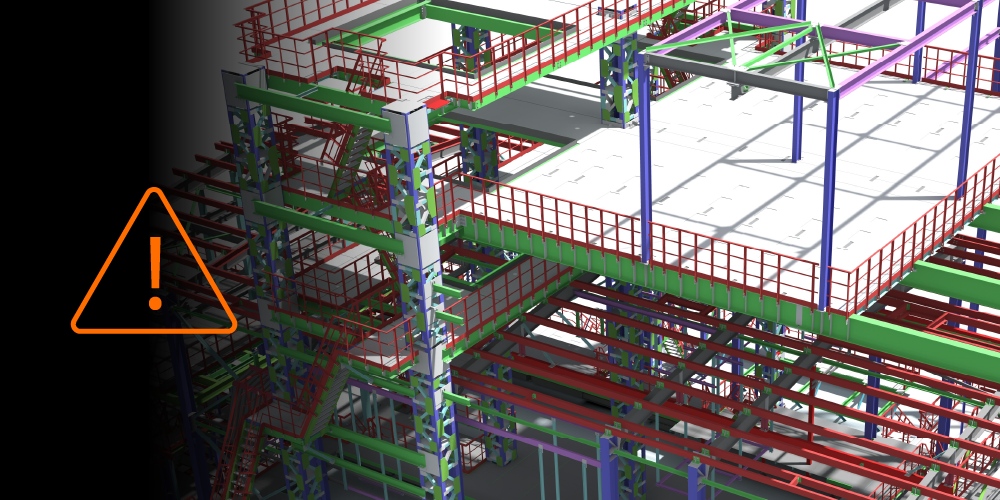Related Articles
— 8 min read
Schedule of Values in Construction: What to Include and How to Build One

Last Updated Sep 10, 2025

Josh Krissansen
48 articles
Josh Krissansen is a freelance writer with two years of experience contributing to Procore's educational library. He specialises in transforming complex construction concepts into clear, actionable insights for professionals in the industry.
Last Updated Sep 10, 2025

Construction projects involve hundreds of tasks — and just as many costs. Tracking what’s complete, what’s been billed, and what’s still to come requires more than instinct: it requires a consistent framework.
A Schedule of Values (SOV) provides that framework. By breaking a project into line items tied to dollar values, it supports progress tracking, billing, and financial control. For contractors, project owners, managers, and consultants, it’s a tool for accountability — one that protects against confusion, disputes, and delays.
In this article, we’ll explore what a Schedule of Values includes, common challenges to be aware of, and best practices for Australian construction teams when developing an SOV.
Table of contents
What is a Schedule of Values in Construction?
A Schedule of Values (SOV) is a detailed breakdown of a construction contract’s total cost into individual line items. Each line represents a distinct phase or deliverable of the project.
These line items are assigned specific values and serve as the foundation for billing, progress tracking and financial oversight. SOVs support key functions like:
- Managing sequence and cash flow across staged work
- Supporting subcontractor billing and claims
- Providing a clear audit trail for payment verification
- Ensuring compliance with contract terms on large-scale projections
Each line item in the schedule represents a specific portion of work and its value. As work is completed, teams use the schedule to submit progress claims, verify payment applications, and track billings against what’s been delivered.
Project stakeholders also consult the schedule as a reference point when reviewing claims or assessing progress on-site.
Components of a Schedule of Values
No large-scale construction project can move forward without an SOV in place. Often, head contractors and the project owner will scrutinise information submitted by bidders on a Schedule of Values and may even ask for additional details to ensure costs are competitive and compliant.
This should tell you that a Schedule of Values can vary quite a bit from project to project, by industry, or even by specialty (for example, a bid for a public works project vs electrical and duct work). Despite these variances, all SOVs need to fulfill four key functions:
1) A Detailed Cost Breakdown
Each major activity or phase is assigned a clear dollar value — ideally tied to the agreed contract or buyout terms. This structure links cost to scope, making it easier to manage work in progress and maintain alignment with the contract total.
2) Cost Tracking and Analysis
Line items are typically tied to budget categories or cost codes. This structure makes it easier to compare forecasted spend with actual progress and identify areas of overspend or inefficiency, helping with cost control and cash flow.
Control is a key aspect of an SOV — and, though it starts with fiscal transparency, its benefits extend to contractor relationships and long-project success. Project Owners or general contractors who head the project use SOVs to ensure that they’re working with contractors who will remain competitive in pricing, an important factor in ongoing partnerships
3) Secure Financial Management
The Schedule of Values provides a structured format for submitting and reviewing claims. When all items are clearly defined and linked to scope, contract administrators can validate payments to contractors faster and with fewer discrepancies, disputes arising from potential unbalanced bids (whether materially or mathematically), and decreased delays in payment.
4) Progress Tracking
Each line includes data fields for percentage complete, amounts claimed, and remaining balance. This detail helps the project manager and teams monitor the current status of work in real time and align financials with work delivered.
Typical fields in a well-structured SOV include:
- Work description
- Scheduled value
- Work completed (to date and this period)
- Stored materials (if applicable)
- Total completed and stored
- Percent complete
- Balance to finish
- Retainage
Who Uses a Schedule of Values?
While SOVs are most common complex commercial or infrastructure projects, they’re increasingly used on residential builds that involve progress payments or staged delivery.
Regardless of the scale, the purpose is the same: to provide all stakeholders with a clear, shared view of scope and cost.
Typical users include:
- Head Contractors: Use the SOV to manage billing, cost control, and sequencing
- Subcontractors: Reference the SOV for progress claims and staged payments
- Project Owner: Relies on SOVs to validate and assess real-time project performance
- Contract Administrators: use the SOV to verify alignment with scope and contractual obligations.
The Importance of a Schedule of Values
When builders, contract administrators, project owners, and consultants have the same agreed schedule to refer to, commercial reviews move faster, and decisions are easier to justify. The Schedule of Values reduces ambiguity and creates a foundation for more transparent financial conversations.
Accurate schedules also play a key role in meeting contractual requirements. Many construction contracts require a defined method of value tracking for elements like progress claims and variation approvals. With an up-to-date Schedule of Values, teams can meet those obligations without unnecessary admin.
The Schedule of Values also helps reduce payment disputes by giving stakeholders a trustworthy reference point. Scope and cost can be verified quickly, and any gaps can be addressed before they escalate.
Ultimately, the Schedule of Values provides peace of mprind that all costs are accurate, tracked, and communicated clearly at every project stage.
Common Challenges with a Schedule of Values
Even a carefully planned Schedule of Values can lead to problems if it’s not managed properly. These common issues can impact the accuracy of progress claims, delay approvals, or cause a lack of alignment between project workers.
Front-Loading Costs
When contractors load higher-value items into the early stages of a project — such as by inflating the value of the work at the beginning and reducing the value of later tasks — it can distort the payment process and reduce leverage down the line.
Front-loading can also make it harder for contract administrators to confirm whether the claimed value aligns with real progress on site.
Inadequate Detail or Excessive Complexity
Being too vague in a schedule of values can make validation challenging. For example, a label like “Electrical Work” doesn’t indicate the tasks or components included in the scope. On the other hand, adding too much detail to the schedule can cause confusion and create unnecessary admin.
The Schedule of Values should include sufficient detail for teams to understand what’s involved. This avoids issues, disputes, and potential change orders at a later stage of the project.
Failure to Update With Change Orders
When the Schedule of Values isn’t updated to include approved change orders, it becomes harder to track value accurately. This can lead to discrepancies in the payment schedules and misunderstandings regarding scope, progress, and payment status.
Miscommunication Between Parties
Conflicts can arise if different team members interpret line items or percentages differently, and reviews can stall. Early alignment on format, wording, and expectations reduces the chance of confusion later.
Insufficient Review Process
Submitting a Schedule of Values without a comprehensive review and negotiation can increase the risk of errors and disagreements. The schedule should be reviewed by both the project owner and the general contractor to ensure both are in agreement on its contents before construction begins.
A well-reviewed Schedule of Values helps prevent confusion later on. Lock in your structure early, with clear scope and cost codes, to avoid last-minute billing issues.
Best Practices for Creating a Schedule of Values
A strong Schedule of Values (SOV) is essential for financial management, accurate billing, and efficient contract administration. The best SOVs are clear, consistent, and easy to maintain as the project evolves.
Create a Clear and Accurate Breakdown
Cost breakdowns must accurately reflect how work is delivered on-site. Each line item should correspond to a specific unit of work, so it can be tracked, measured, and verified. Avoid bundling unrelated activities together, and aim for a level of detail supporting progress claims and commercial reviews.
For example, instead of “Electrical Work” itemise by circuit runs, switchboards and feeders, or lighting installations.Review and Update Regularly
The Schedule of Values isn’t a set-and-forget document. Revisit it regularly, especially after change orders are approved. Keeping the schedule up-to-date helps align payment structures with the latest project scope and reduces the chance of claims being held up due to inaccuracies.
Define Retainage and Payments Clearly
Agree upfront on how retainage will be applied across line items and how progress will be measured. Ensure all payment terms, including claim frequency and required documentation, are clearly defined in the contract documents and reflected in the Schedule of Values.
Use a Consistent Schedule of Values Template
Using a template for your Schedule of Values reduces setup time and minimises potential errors. Templates make internal reviews more efficient, particularly on larger projects, and a repeatable format makes it easier to compare, audit, and improve over time.
Conduct Collaborative Stakeholder Reviews
Be sure to involve key stakeholders in reviewing the Schedule of Values before it’s finalised. Obtaining input from project owners, quantity surveyors, and contract administrators can help to resolve issues early, reduce the risk of disputes, and build confidence in the process.
A clear Schedule of Values keeps projects on track and on budget
When the construction Schedule of Values is structured and maintained correctly, it becomes a powerful tool for managing claims, reducing disputes, ensuring timely payments, and financially aligning projects.
To make the process faster, easier, and more reliable, consider using construction software like Procore to manage your Schedule of Values from start to finish.
Categories:
Written by

Josh Krissansen
48 articles
Josh Krissansen is a freelance writer with two years of experience contributing to Procore's educational library. He specialises in transforming complex construction concepts into clear, actionable insights for professionals in the industry.
View profileExplore more helpful resources

Managing Direct Costs in Construction: How Visibility Drives Profitability
Direct costs define the financial reality of every construction project. They cover the labour, materials, and equipment that drive delivery and determine profitability. But even the best-planned budgets can shift...

BIM Clash Detection: Reducing Rework, Delays, and Risk in Construction
Design clashes can be a significant hidden cost in construction, as each conflict between systems risks expensive rework, project delays, and reduced margins. BIM clash detection empowers teams to identify...

Next-Gen Job-Costing: Ready to Move? 5 Things to Consider Before You Get Started
In this three-part series, Quantity Surveyor turned Financial Solutions Specialist Clint Burgess uncovers the real-world gains for people, processes, and profits when businesses move from legacy to next-generation Enterprise Resource...

From Workarounds to Workflow: Solving Construction’s Legacy Job-Costing System Challenges with Next-Gen Tools
In this three-part series, Quantity Surveyor turned Financial Solutions Specialist Clint Burgess uncovers the real-world gains for people, processes, and profits when businesses move from legacy to next-generation Enterprise Resource...
